Abstract
Hydrodynamic gene delivery to the liver has potential as a safe and effective approach for clinical liver gene therapy. However, the simplicity of the technique in rodents – an intravenous injection – belies the theoretical and practical complexity for clinical application. A key issue is that outflow obstruction of the DNA solution from the liver is a critical factor for raising intrahepatic vascular pressure, which in turn provides the force to swell the liver and effect gene delivery. For conventional hydrodynamic gene delivery via tail vein injection, this outflow obstruction is provided naturally by the vascular resistance of the gut, spleen and pancreas. For regional hydrodynamic gene delivery to the liver, outflow obstruction to create a closed system requires surgical intervention, making it unlikely that minimally invasive techniques will be possible in the clinic. Intrinsic factors, in particular compliance (elasticity) of the liver are likely to be crucial in determining the degree of swelling for a given level of intrahepatic vascular pressure. Liver compliance is likely to be the major reason for the low level of hydrodynamic gene delivery in the pig model, and will influence the effectiveness of the approach in man, both in general and in different disease states.
Keywords: Hydrodynamic gene delivery, liver, gene therapy, mechanisms, clinical application
Current Gene Therapy
Title: Hydrodynamic Gene Delivery to the Liver: Theoretical and Practical Issues for Clinical Application
Volume: 9 Issue: 2
Author(s): Greta J. Sawyer, Mohamed Rela, Mark Davenport, Michael Whitehorne, Xiaohong Zhang and John W. Fabre
Affiliation:
Keywords: Hydrodynamic gene delivery, liver, gene therapy, mechanisms, clinical application
Abstract: Hydrodynamic gene delivery to the liver has potential as a safe and effective approach for clinical liver gene therapy. However, the simplicity of the technique in rodents – an intravenous injection – belies the theoretical and practical complexity for clinical application. A key issue is that outflow obstruction of the DNA solution from the liver is a critical factor for raising intrahepatic vascular pressure, which in turn provides the force to swell the liver and effect gene delivery. For conventional hydrodynamic gene delivery via tail vein injection, this outflow obstruction is provided naturally by the vascular resistance of the gut, spleen and pancreas. For regional hydrodynamic gene delivery to the liver, outflow obstruction to create a closed system requires surgical intervention, making it unlikely that minimally invasive techniques will be possible in the clinic. Intrinsic factors, in particular compliance (elasticity) of the liver are likely to be crucial in determining the degree of swelling for a given level of intrahepatic vascular pressure. Liver compliance is likely to be the major reason for the low level of hydrodynamic gene delivery in the pig model, and will influence the effectiveness of the approach in man, both in general and in different disease states.
Export Options
About this article
Cite this article as:
Sawyer J. Greta, Rela Mohamed, Davenport Mark, Whitehorne Michael, Zhang Xiaohong and Fabre W. John, Hydrodynamic Gene Delivery to the Liver: Theoretical and Practical Issues for Clinical Application, Current Gene Therapy 2009; 9 (2) . https://dx.doi.org/10.2174/156652309787909535
| DOI https://dx.doi.org/10.2174/156652309787909535 |
Print ISSN 1566-5232 |
| Publisher Name Bentham Science Publisher |
Online ISSN 1875-5631 |
Call for Papers in Thematic Issues
Programmed Cell Death Genes in Oncology: Pioneering Therapeutic and Diagnostic Frontiers (BMS-CGT-2024-HT-45)
Programmed Cell Death (PCD) is recognized as a pivotal biological mechanism with far-reaching effects in the realm of cancer therapy. This complex process encompasses a variety of cell death modalities, including apoptosis, autophagic cell death, pyroptosis, and ferroptosis, each of which contributes to the intricate landscape of cancer development and ...read more
Related Journals
 17
17
- Author Guidelines
- Bentham Author Support Services (BASS)
- Graphical Abstracts
- Fabricating and Stating False Information
- Research Misconduct
- Post Publication Discussions and Corrections
- Publishing Ethics and Rectitude
- Increase Visibility of Your Article
- Archiving Policies
- Peer Review Workflow
- Order Your Article Before Print
- Promote Your Article
- Manuscript Transfer Facility
- Editorial Policies
- Allegations from Whistleblowers
- Announcements
Related Articles
-
<i>Nigella Sativa</i> (Black Seeds), A Potential Herb for the Pharmacotherapeutic Management of Hypertension - A Review
Current Cardiology Reviews The Role of Endothelin System in Cardiovascular Disease and the Potential Therapeutic Perspectives of its Inhibition
Current Topics in Medicinal Chemistry Neuromuscular Blockade in the Optimal Management of Mechanical Ventilation of Patients with Respiratory Distress
Current Respiratory Medicine Reviews Digital Radiographic Systems Quality Control Procedures
Recent Patents on Medical Imaging Editorial (Thematic Issue: Modifying Cardiovascular Risk Factors: Newer Advances in Cardiovascular Metabolism and Diagnostic Technologies)
Current Pharmaceutical Design Clinical and Genetic Features of Warts, Hypogammaglobulinemia, Infections and Myelokathexis (WHIM) Syndrome
Current Molecular Medicine Connexins in Renal Endothelial Function and Dysfunction
Cardiovascular & Hematological Disorders-Drug Targets Insights in microRNAs Biology
Current Topics in Medicinal Chemistry Inspired Nitric Oxide and Modulation of Oxidative Stress During Cardiac Surgery
Current Drug Safety High-output Cardiac Failure: A Forgotten Phenotype in Clinical Practice
Current Cardiology Reviews Role of CYP2E1 in Mitochondrial Dysfunction and Hepatic Injury by Alcohol and Non-Alcoholic Substances
Current Molecular Pharmacology A Clinical Perspective of Soluble Epoxide Hydrolase Inhibitors in Metabolic and Related Cardiovascular Diseases
Current Molecular Pharmacology Tandem Pore Domain K Channels An Important Site of Volatile Anesthetic Action
Current Drug Targets Functional Neuroanatomy of the Noradrenergic Locus Coeruleus: Its Roles in the Regulation of Arousal and Autonomic Function Part I: Principles of Functional Organisation
Current Neuropharmacology Treating COPD in Older and Oldest Old Patients
Current Pharmaceutical Design Anti-Inflammatory Drugs and Statins for Arterial Stiffness Reduction
Current Pharmaceutical Design Treatment of Obesity: Should We Target the Individual or Society?
Current Pharmaceutical Design Pathogenesis of Chronic “Cor pulmonale” in COPD
Current Respiratory Medicine Reviews Exploring the Technology Landscape of 7TMR Drug Signaling Profiling
Current Topics in Medicinal Chemistry NOS Inhibitors: Structure, Biological Activity and Mechanism of Action
Current Enzyme Inhibition












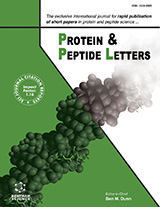
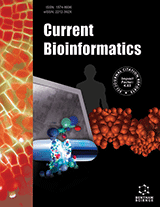
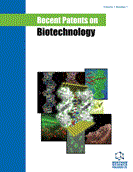
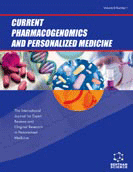
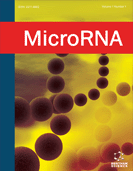
.jpeg)








